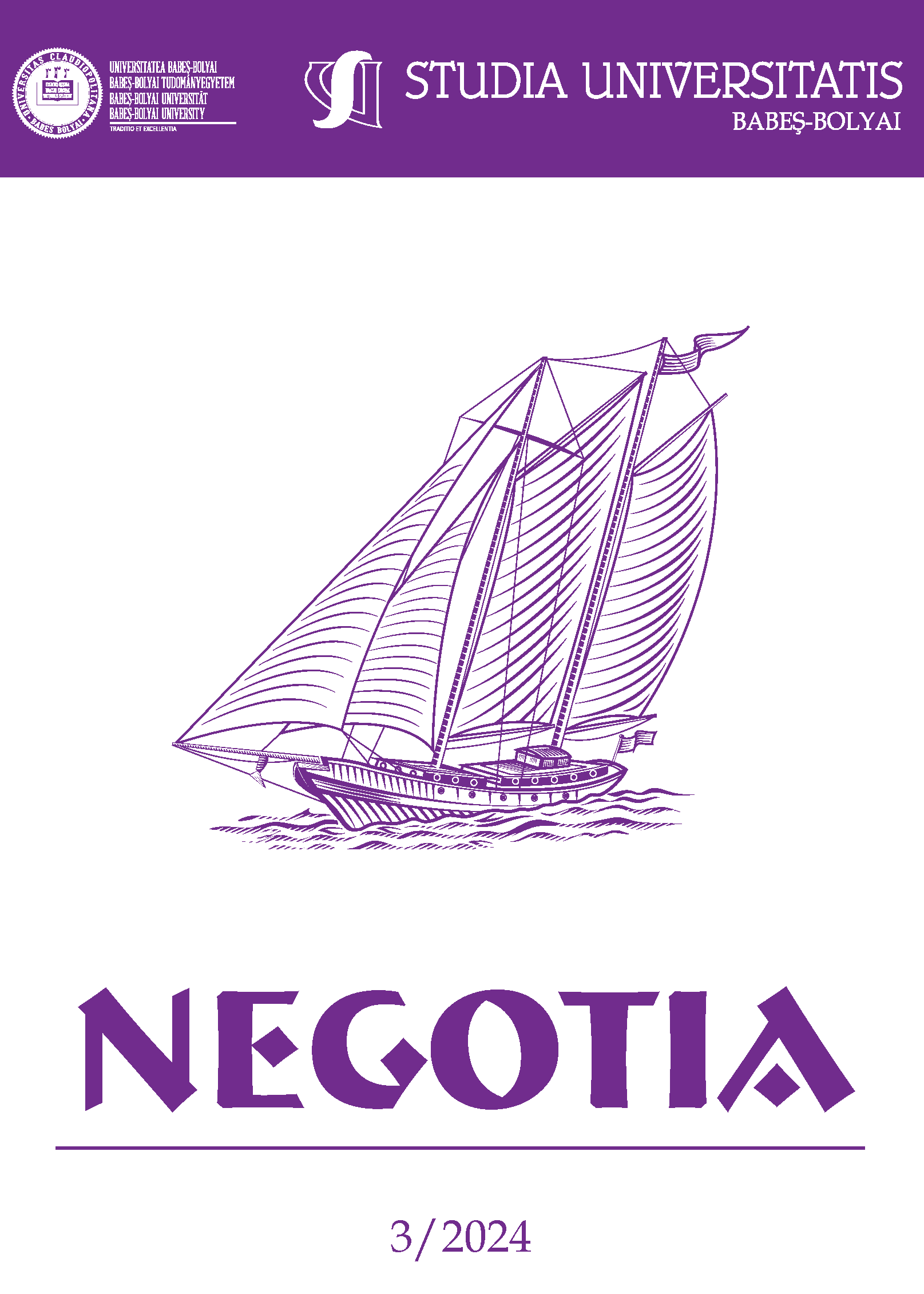What Makes a Brand Successful? A Case-study of Musette Brand
DOI:
https://doi.org/10.24193/subbnegotia.2024.3.02Keywords:
female managers, market, employee, communication, brand personalityAbstract
The study of gender differences has recently become a growing focus. Nothing is more evidence of this than the fact that in 2023 Claudia Goldin (who studied the position of women in relation to the labour market) was awarded the Nobel Prize in Economics. Furthermore, internationally, there are numerous studies that examine the differences between women and men as leaders and managers. The question arises as to what factors play a significant role from the perspective of women managers in starting and managing a successful business. The present research focuses on the analysis of a Romanian brand - Musette - which is co-founded by a woman (through Cristina Bâtlan) and is represented internationally. Despite the considerable success of the Musette brand, there is a lack of literature in Romania on the study of this brand. Consequently, the objectives of our study are: (1) to identify the conditions that should be the pillars of a start-up business, (2) to identify the factors without which there is no possibility of further development and lasting success, and (3) to examine the brand personality characteristics of Musette.
JEL classification: M10, M31
Article History: Received: March 5, 2024; Reviewed: July 10, 2024;
Accepted: August 7, 2024; Available online: September 23, 2024
References
Cojocaru, F.-G. (2014). Women entrepreneurship - A solution for Romanian economy development, Management Strategies Journal, 26(4), 555-562. Available at: https://ideas.repec.org/a/brc/journl/v26y2014i4p555-562.html.
Grant, A. D. & Taylor, A. (2014). Communication essentials for female executives to develop leadership presence: Getting beyond the barriers of understating accomplishment. Business Horizons, 57(1), 73-83. https://doi.org/10.1016/j.bushor.2013.09.003.
Huang, L., Joshi, P., Wakslak, C. & Wu, A. (2021). Sizing up entrepreneurial potential: Gender differences in communication and investor perceptions of long-term growth and scalability. Academy of Management Journal, 64(3), 716-740. https://doi.org/10.5465/amj.2018.1417.
Hunt, V., Layton, D. & Prince, S. (2015). Diversity matters. McKinsey & Company. Available at: https://www.mckinsey.com/insights/organization/~/media/2497d4ae4b534ee89d929cc6e3aea485.ashx.
Huszár, Á. (2014). Gender and communication: communication in the workplace. The differences, or who is better? [A gender és a kommunikáció összefüggései: kommunikáció a munkahelyen A különbségek, avagy ki a jobb?]. Economica, 7(4), 7-12. https://doi.org/10.47282/ECONOMICA/2014/7/4/4353.
Karim, A., Syamsuddin, I., Jumarding, A. & Amrullah, A. (2022). The effect of gender independence and leadership style on audit quality in Makassar Public Accounting Offices. International Journal of Social Science Research and Review, 5(7), 114-126. https://doi.org/10.47814/ijssrr.v5i7.341.
Kimbrough, A. M., Guadagno, R. E., Muscanell, N. L. & Dill, J. (2013). Gender differences in mediated communication: Women connect more than men do. Computers in Human Behavior, 29(3), 896-900. https://doi.org/10.1016/j.chb.2012.12.005.
Kotler, P. & Keller, K. L. (2006). Marketingmenedzsment [Marketing management], Akadémiai Publishing House, Budapest.
Merchant, K. (2012). How men and women differ: Gender differences in communication styles, influence tactics, and leadership styles, CMC, Senior Theses. Available at: https://scholarship.claremont.edu/cgi/viewcontent.cgi?article=1521&context=cmc_theses.
Mohindra, V. & Azhar, S. (2012). Gender communication: A comparative analysis of communicational approaches of men and women at workplaces. IOSR Journal of Humanities and Social Science, 2(1), 18-27. https://doi.org/10.9790/0837-0211827.
Netshitangani, T. (2008). Gender differences in communication styles: The impact on the managerial work of a woman school principal. In Comunicación presentada en ANZCA08 Conference: Power and Place. Wellington, Nueva Zelanda. Recuperado el (Vol. 20). Available at: https://citeseerx.ist.psu.edu/document?repid=rep1&type=pdf&doi=e3c516aebe220111ed2d2c1c3fa6ac6ff171975b.
Olins W. (2010), Despre brand [About brands], 2nd Edition, Publisher Comunicare.ro., București.
Tench, R., Topić, M. & Moreno, A. (2017). Male and female communication, leadership styles and the position of women in public relations. Interactions: Studies in Communication & Culture, 8(2-3), 231-248. https://doi.org/10.1386/iscc.8.2-3.231_1.
Timko, K. (2017). Gender, communication styles, and leader effectiveness, MPRA Paper, https://mpra.ub.uni-muenchen.de/77021/1/MPRA_paper_77021.pdf.
Törőcsik, M. (2006). Consumer behaviour trends [Fogyasztói magatartástrendek], Akadémiai Publishing House, Budapest.
von Hippel, C., Wiryakusuma, C., Bowden, J. & Shochet, M. (2011). Stereotype threat and female communication styles. Personality and Social Psychology Bulletin, 37(10), 1312-1324. https://doi.org/10.1177/0146167211410439.
Zeler, I., Fuentes-Lara, C. & Moreno, Á. (2022). Female leadership in communication management in Spain: making a difference in a sexist culture. Corporate Communications: An International Journal, 27(5), 74-92. https://doi.org/10.1108/CCIJ-04-2022-0047.
*** The movie: The Case of the Missing Will, based on the novel written by Agatha Christie, https://www.youtube.com/watch?v=7aAkSNMaRCQ. At 00:9:57 of the film, one can hear the statements that are presented in the Introduction and Review of Literature sections.
The podcast: Cristina Bâtlan, a lioness who built an empire: At home with Măruță [Cristina Bâtlan, o leoaică ce a construit un imperiu: Acasă la Măruță], https://www.youtube.com/watch?v=BejCPA7SRCk.
Downloads
Published
How to Cite
Issue
Section
License
Copyright (c) 2024 Studia Universitatis Babeș-Bolyai Negotia

This work is licensed under a Creative Commons Attribution-NonCommercial-NoDerivatives 4.0 International License.






